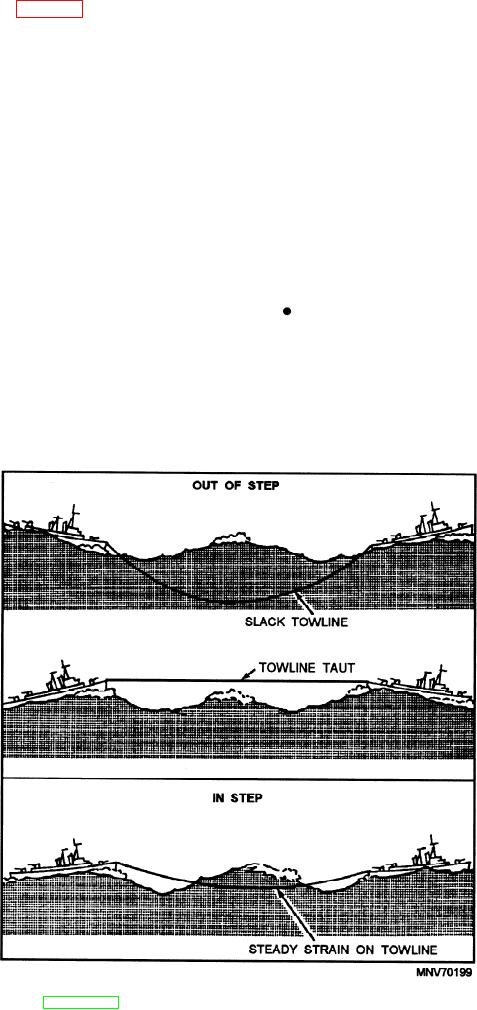
dangerous strains. (See fig. 7-17.) When the scope is
SALVAGE
adjusted properly, the chain is secured in the same way
The term salvage covers everything from refloating
as before.
stranded vessels to wreck removal. World War II
provided a prime example of the value of salvage
Dropping the Tow
operations. The U.S. Navy salvage organization during
this period salvaged and reclaimed ships and equipment
When the ships are dead in the water and the order is
given, the tow engages its wildcat, casts off the stopper,
worth over 2 billion dollars.
and heaves in on the chain. When the end of the towline
PRINCIPAL TYPES OF
is aboard, the messenger is bent on the towline. Turns
SALVAGE
are taken around the capstan with the messenger, and
the chain is walked out until the strain is on the
It is, of course, impossible to place all wrecks into a
messenger. Then the towline is unshackled and eased
neat category. Nearly all will fall within one of four
out. Personnel on the towed ship run in the towline by
principal types of salvage. The types of salvage are:
capstan or hand. Care must be taken on the towing ship
that the catenary does not become too heavy for the
RESCUE SALVAGE. Rescue salvage provides
crew on the towed ship to handle.
emergency salvage services to vessels and
When a recovery line is rigged on the towing ship,
aircraft in distress at sea. The most important
the end of it is led through the towing chock from
service is towing damaged ships to a safe harbor.
outboard to inboard and hauled in by hand (or, if
Fire fighting, pumping, and minor patching also
necessary, by power) until the chafing chain and the
are services a salvage ship can render in an
inboard end of the towline are aboard. Then the towline
emergency. Major problems are storms and
is hauled the rest of the way in.
gales, fire, collision, machinery failure, shifting
Figure 7-17.--Examples of out-of-step and in-step during towing.
7-14

